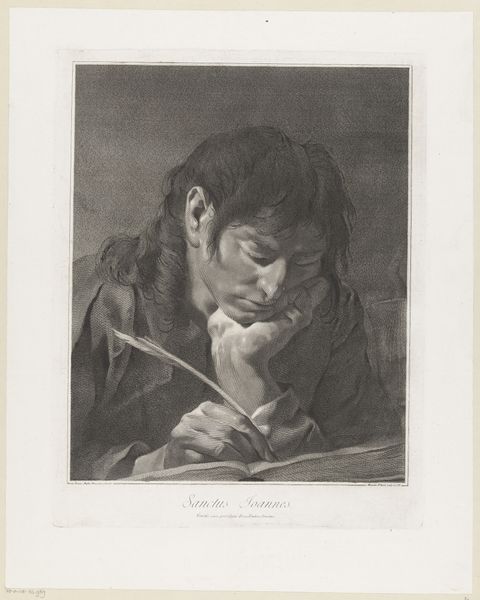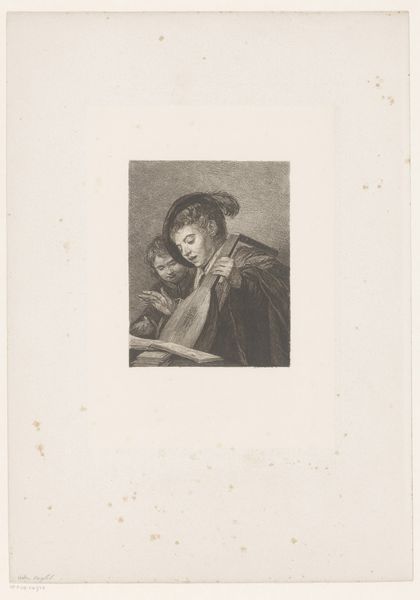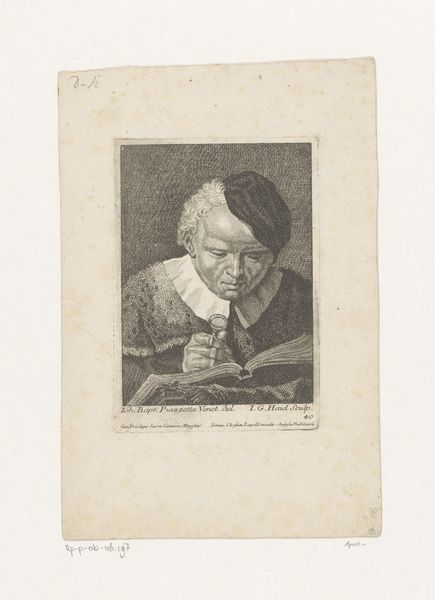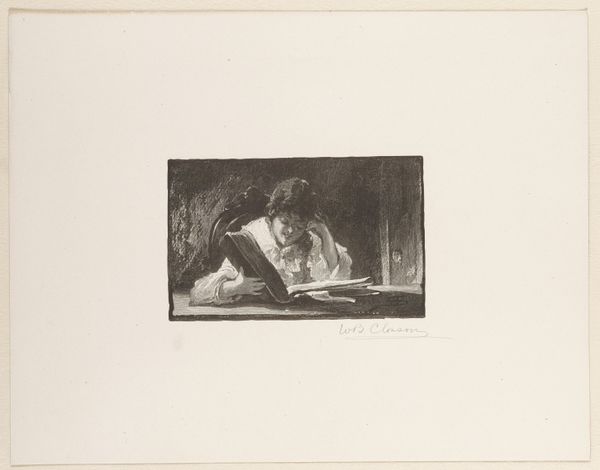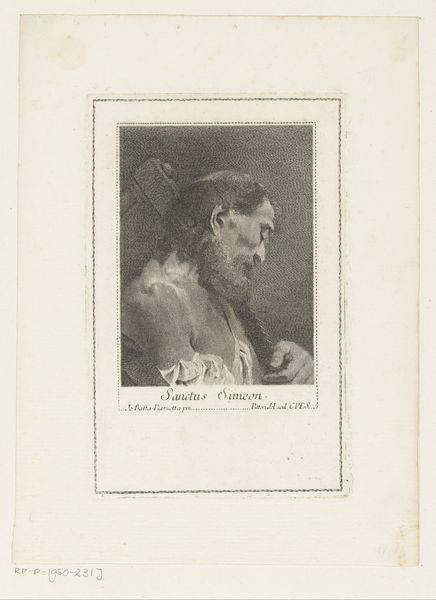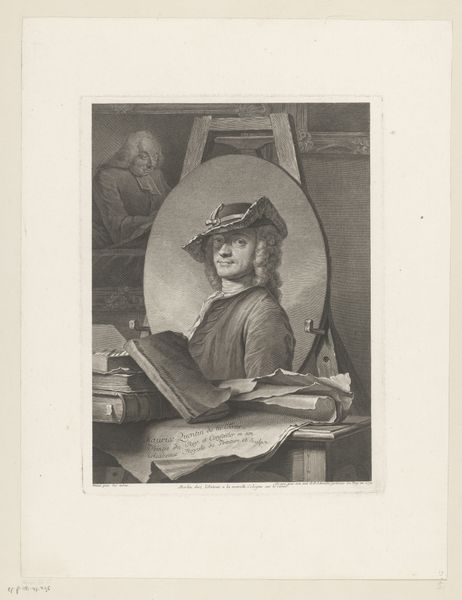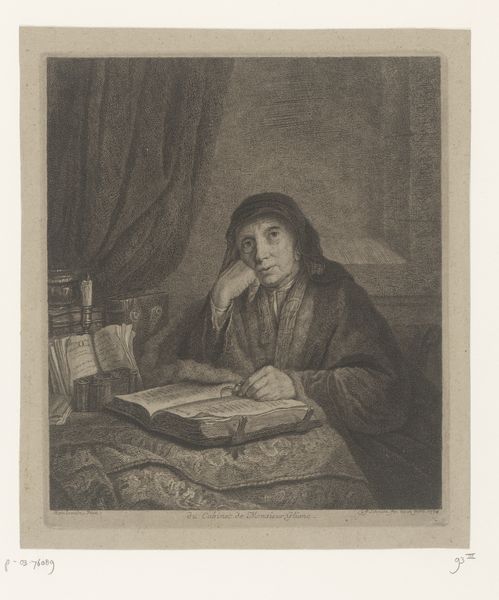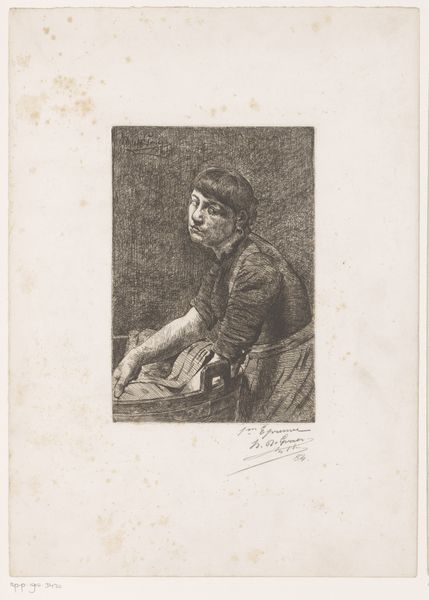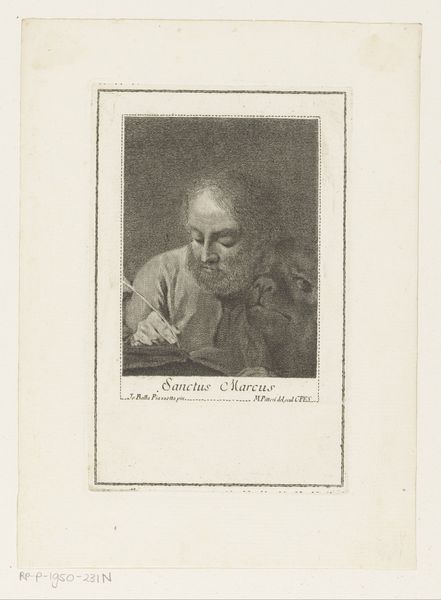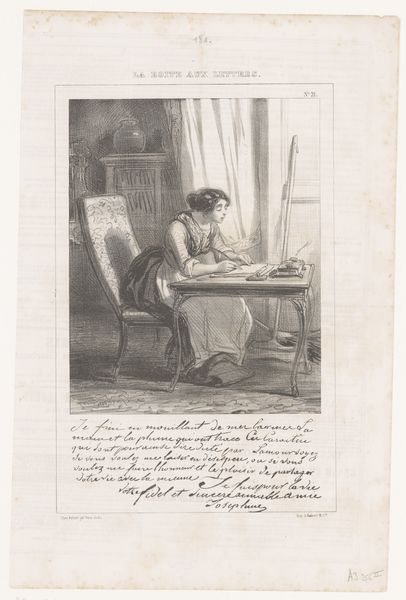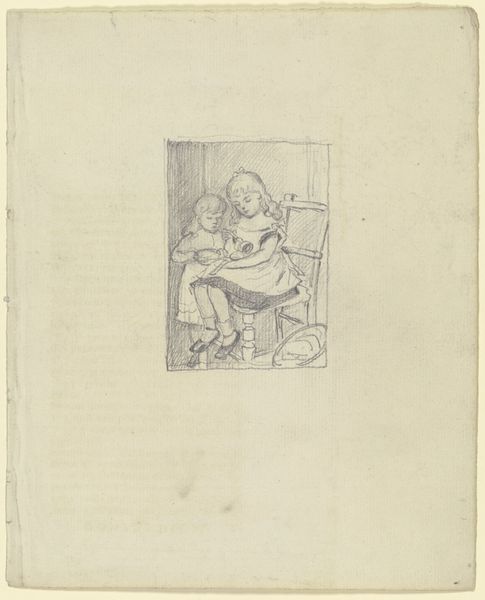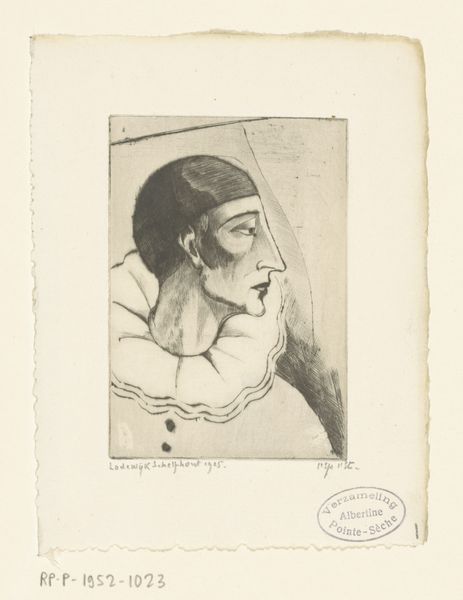
print, engraving
#
portrait
#
baroque
# print
#
old engraving style
#
personal sketchbook
#
engraving
Dimensions: height 160 mm, width 104 mm
Copyright: Rijks Museum: Open Domain
Editor: Here we have Giovanni Marco Pitteri's "Apostel Johannes," an engraving from sometime between 1712 and 1786. It's striking how the light catches the saint’s face. How do you approach interpreting this print? Curator: From a materialist perspective, I'm most interested in the labor and process embedded in the engraving. Consider the physical act of cutting those lines into the metal plate. The engraver, Pitteri, is not just replicating an image, but also engaging in a skilled craft, a form of physical production. The Baroque aesthetic, evident in the portrait style, becomes secondary to this process of material transformation. The means of production were crucial to the print's dissemination and its social impact, don't you think? Editor: That’s a great point. I was so focused on the religious subject matter and the expressive face. But the technical skill and labor that went into creating multiple copies really changes my perception of its value. Were these prints intended for a wide audience, a sort of mass consumption of art? Curator: Exactly. And think about the paper itself—where did it come from? Who made it? What social and economic systems enabled its production? It makes us reconsider the value ascribed to singular paintings versus the democratizing effect of printmaking. It questions the whole hierarchy between 'high art' and more accessible forms of visual culture. Editor: So, by focusing on the materials and production, we shift our attention from the individual genius of the artist to the network of labor that made the image possible? Curator: Precisely. We’re looking at the conditions of its creation, its circulation, and ultimately, its consumption within a specific historical context. The artistry lies not only in the final image, but in the whole system of making. Editor: That gives me so much to think about regarding the role of the artist and the value of reproduced images. Curator: Indeed! It’s a reminder that every artwork is a product of its material and social environment.
Comments
No comments
Be the first to comment and join the conversation on the ultimate creative platform.
